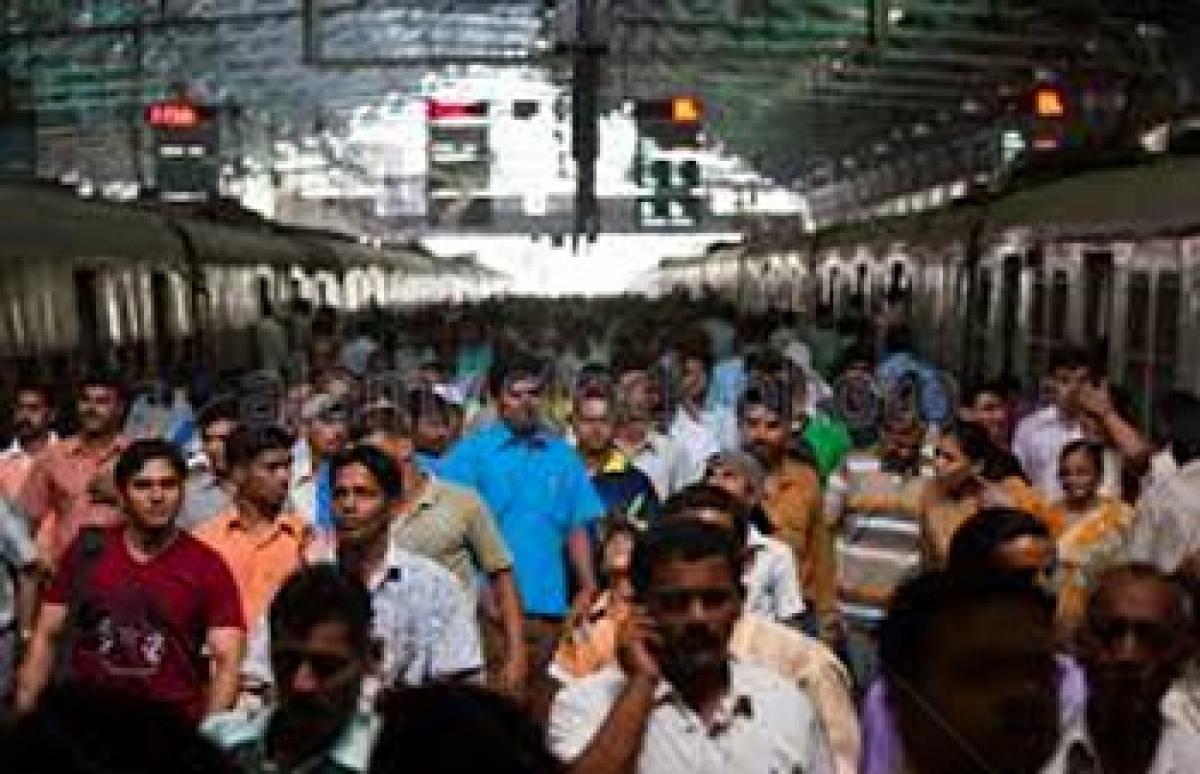Live
- Mercedes-Benz India to Launch 8 New Models, Focus on EVs in 2025
- Collector Inspects EVM Godown in Nagarkurnool
- Devotees' Tragic Demise in Tirumala Stampede: Chakravarthy Acharyulu Expresses Deep Condolences
- Disability can be identified and prevented in the early stages -DMHO Dr. K.V. Swarajya Lakshmi
- Ram Charan's 'Game Changer' Set for Big Box Office Debut
- Scientists Provide Training to Farmers on Integrated Farming
- SP Gaikwad Launches Feedback QR Code Poster for Police Services Opinion
- Helping Hands Charitable Trust Distributes Study Material to 3,000 Students in Gattu Mandal
- Samajwadi Party Strengthens Leadership in Telangana and Andhra Pradesh
- Poco X7 5G and Poco X7 Pro 5G Launched in India: Price, Specifications, and Features
Just In

Economies are no longer built upon physical and natural resources. Economies in the knowledge-based global societies are increasingly built upon human resources. Realising this emerging reality, the Economic Survey for the year 2015-16 rightly calls for greater investment in human capital to harness India’s demographic dividend.
Economies are no longer built upon physical and natural resources. Economies in the knowledge-based global societies are increasingly built upon human resources. Realising this emerging reality, the Economic Survey for the year 2015-16 rightly calls for greater investment in human capital to harness India’s demographic dividend.
Economic Survey calls for a long-term growth rate of 8 to 10 per cent. To achieve this, it lists various measures including investment in education and health. Major investments in social sector are essential to reap the demographic dividend. Otherwise, it would be a demographic nightmare for the country.
Women in both rural and urban India are missing in significant numbers from India’s labour force, according to the Economic Survey 2015-16. Even though the proportion of economically active population (15-59 years) increased from 57.7% to 63.3% during 1991-2013 (Sample Registration System data, 2013), “The Labor Force Participation Rate for women is significantly lower than that for males in both rural and urban areas,” according to the survey.
Economic development does not automatically result in social or human development. However, higher levels of economic growth are essential for sustaining higher levels of human development. Besides aiming for higher growth, the country needs to significantly augment the quality of delivery of public services.
The pre-reform China’s experience also reveals that higher levels of social development created conditions congenial for exploiting the opportunities opened up by globalisation. The experience of South East Asian economies also emphasises the importance of investing in human resources to propel growth. But, the Economic Survey refers to the persisting gaps in educational outcomes in India.
The declining educational outcomes reflected in lower reading levels in both public and private sector schools are areas of concern. According to Annual Status of Education Report (ASER) 2014, there is sharp decline in between 2007 to 2014 in the number of children in Standard V who can read a textbook of Standard II, in both government and private schools, the Survey said. The Survey also highlights the challenge of growing inequalities in India.
Chief Economic Advisor Arvind Subramanian said on Friday that the richest 1% in India earned 12.9% of all income in 2012, up from 9% in 1998. Tax benefits, he said, benefited the super rich more than others. A report by Credit Suisse showed that the richest 1% Indians owned 53% of the country’s wealth, while the share of the top 10% was 76.3%. In fact, inequalities widened in the era of high growth.
Inequalities are the main cause of poverty. One form of inequality would lead to another form of inequality. Educational inequalities would accentuate income inequalities. Therefore, growth is not an end in itself, but only a means to achieve an end. Growth with inclusiveness continues to be a goal and a challenge. Inclusive growth in India requires bridging gaps in educational outcomes, improved health attainments across the population and overcoming all forms of inequalities especially the pervasive gender gaps.

© 2025 Hyderabad Media House Limited/The Hans India. All rights reserved. Powered by hocalwire.com







